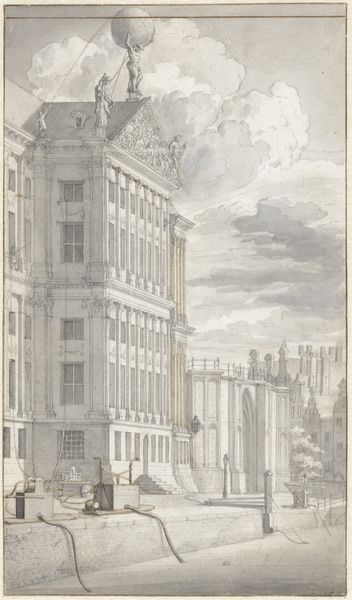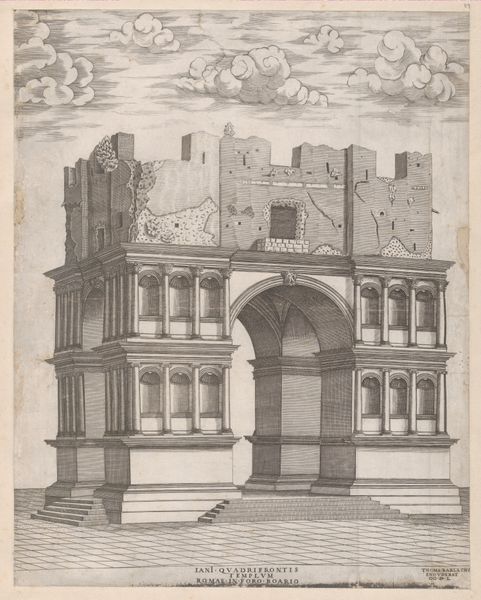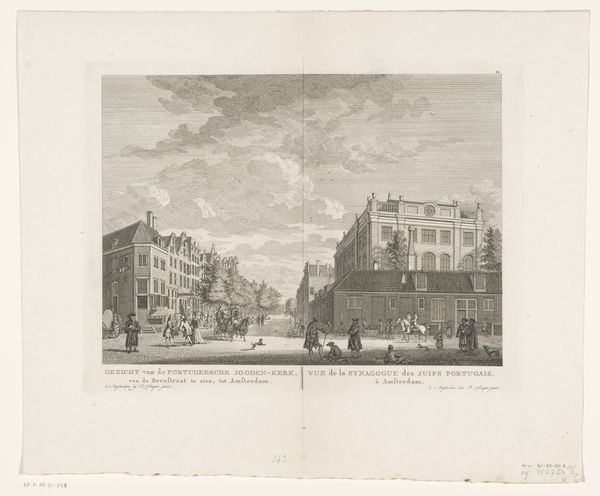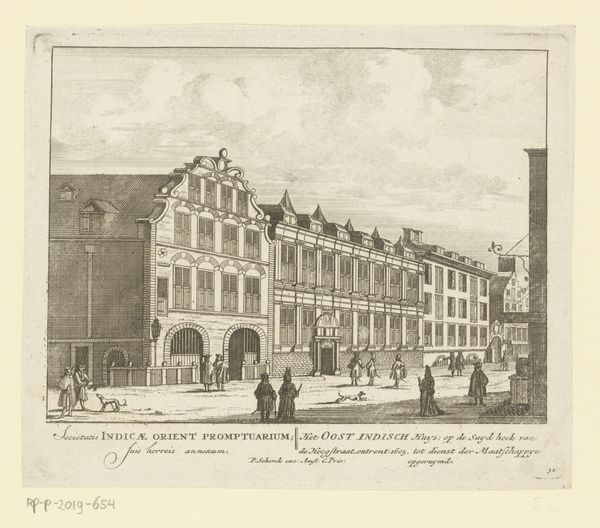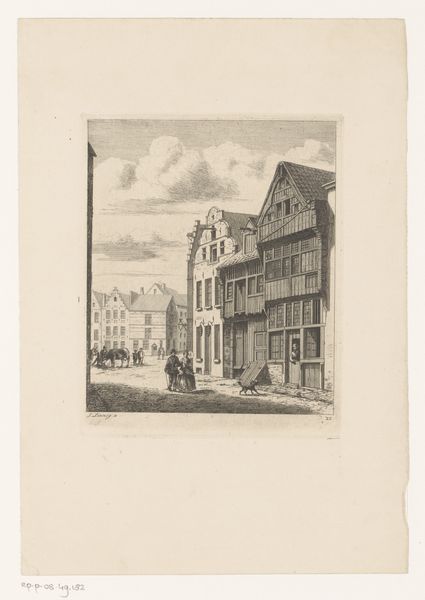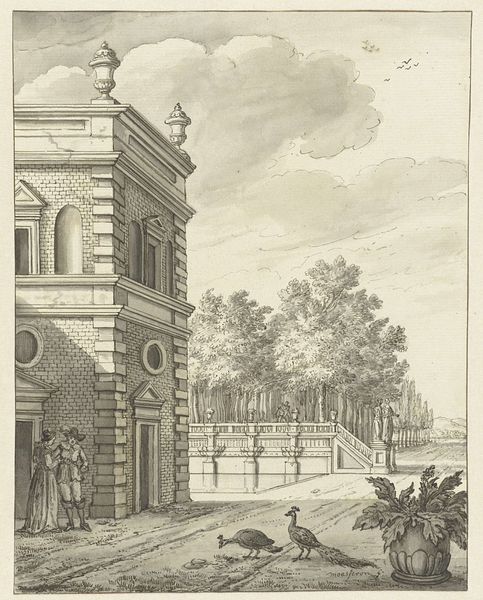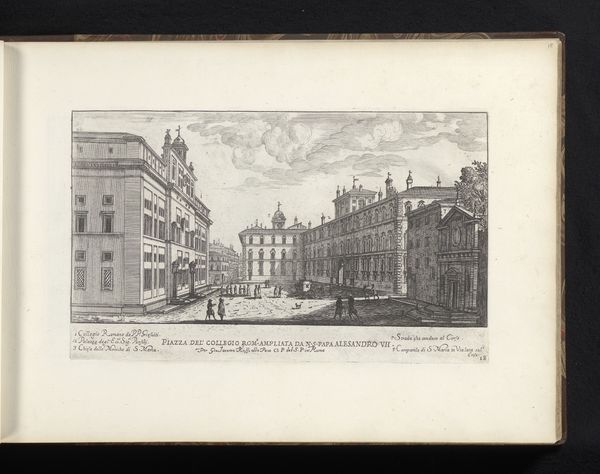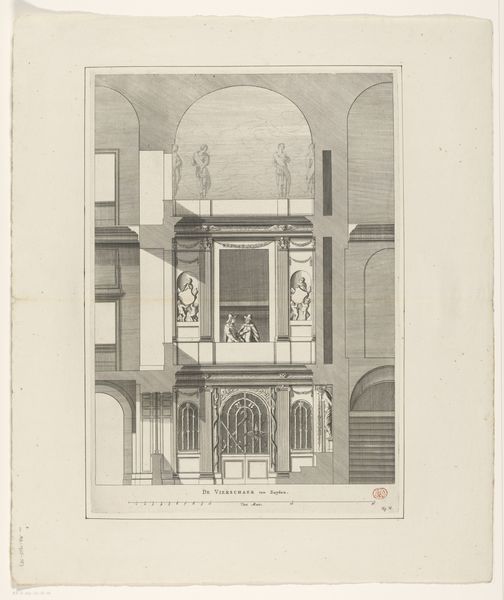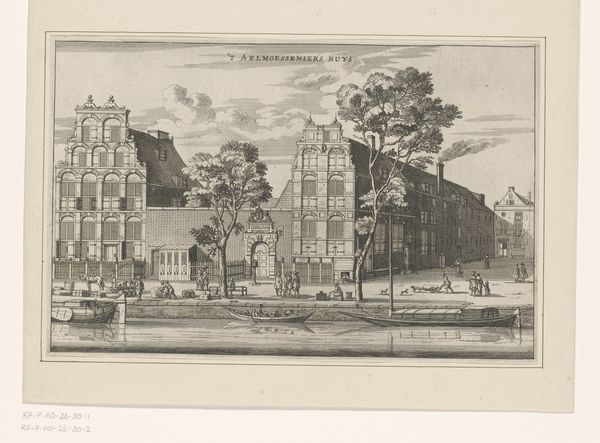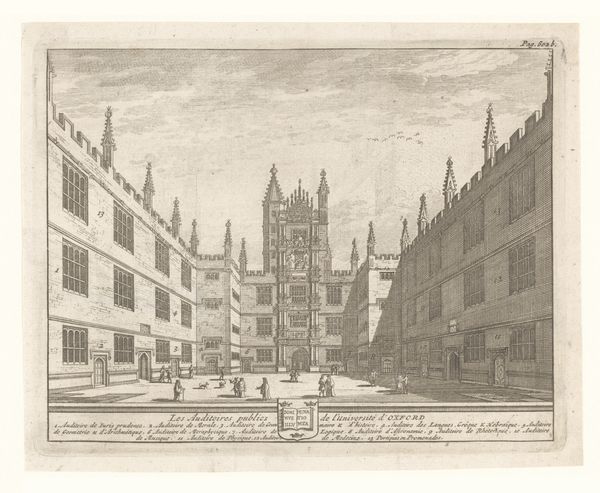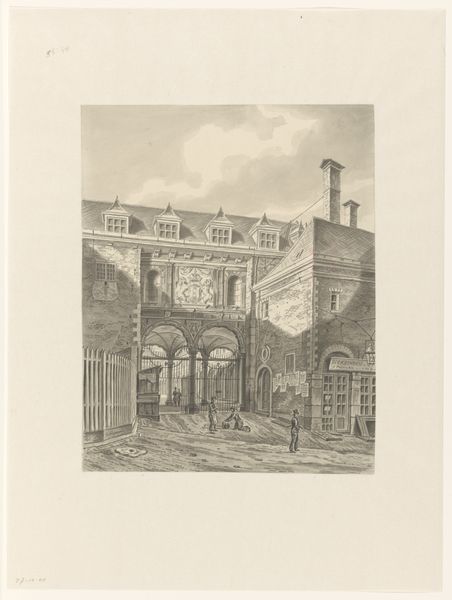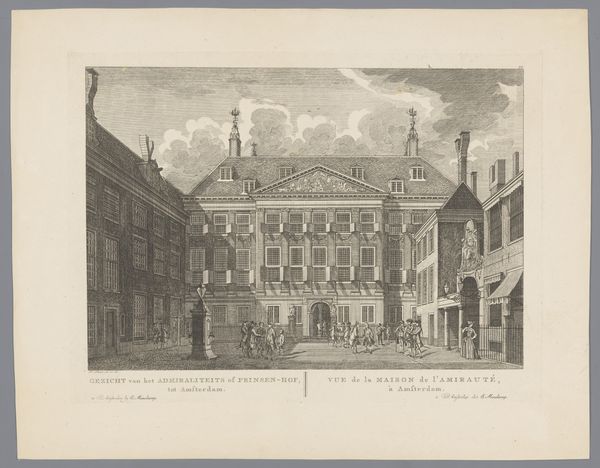
Demonstratie van de slangbrandspuiten aan het water van de Nieuwezijds Voorburgwal achter het Stadhuis, 1672-1673 1690 - 1735
0:00
0:00
laurensscherm
Rijksmuseum
print, engraving
#
baroque
#
dutch-golden-age
# print
#
cityscape
#
history-painting
#
engraving
Dimensions: height 301 mm, width 120 mm, height 59 mm, width 120 mm, height 242 mm, width 120 mm
Copyright: Rijks Museum: Open Domain
Curator: Here we have “Demonstratie van de slangbrandspuiten aan het water van de Nieuwezijds Voorburgwal achter het Stadhuis, 1672-1673,” dating from 1690-1735. This engraving resides here at the Rijksmuseum. What’s your initial take? Editor: The visual precision is remarkable. All those lines and details… it almost feels like a photograph despite being made through engraving! It looks staged; that order of the building facade set against those billowy clouds has an impressive yet artificial quality to it. Curator: Right, consider that engravings like this were made from copper plates painstakingly incised by hand. The artist, Laurens Scherm, would've relied on a skilled workshop and the division of labor inherent in printmaking at this scale to disseminate crucial civic information and cultivate his personal practice. Editor: I find that Atlas figure atop the building very striking. It reinforces a sense of civic burden—or, rather, a display of bearing it. The heavens above seeming almost to pour into it… Curator: The building's presence anchors the print, but what about the water, those bridges, and those intriguing inscriptions at the bottom? These all hint at the function the artwork is concerned with - that being advancements in the mechanics and materials of urban infrastructure. The hoses that the image details imply innovation in public service via municipal advancements. Editor: True, but these technologies of managing water remind me of classical allegories where rivers or wells take the symbolic role of cleansing and purification of moral order, so a hose speaks for so much more than simply its physical presence as civic advancement! Curator: Maybe. But thinking materially, such a print enables a wider distribution and popularization of technology than handwritten diagrams of this tech, especially those solely for the aristocratic and bourgeois. What it enabled at the time has implications on artistic labour today. Editor: Your points on process and circulation are intriguing. Though, my mind wanders to considering this print as something more ethereal. How it transforms earthly responsibility into a testament of higher ambition via art... Curator: Well, this has definitely offered new angles from which we can look at the practical mechanics of this image versus its loftier visual ideals.
Comments
No comments
Be the first to comment and join the conversation on the ultimate creative platform.
